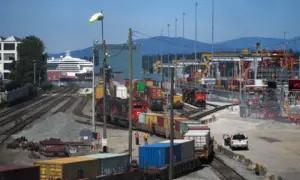It now appears likely that Canada and the United States are having a so-called soft landing and will avoid a recession, and that the worst of inflation is over and is coming down to manageable proportions. However, it should be remembered that the management of the COVID pandemic produced a profound recession—replete with immeasurable psychological damage, economic dislocation to many, and deterioration in education standards—that produced an unnecessary recession. This was a generous gift to the People’s Republic of China which exported the COVID pandemic and greatly profited from it, despite the extreme severity with which Beijing repressed the pandemic within its own borders. And while it is true that the rate of inflation has now been very substantially reduced, it is also true that there was no excuse for the rate of inflation to have jumped as it did in the last five years.
Seen from this perspective, the avoidance of a profound recession coming so quickly on the heels of the self-inflicted economic and societal damage of the pandemic and the reduction to sustainable inflationary rates from heights that should never have happened, is not in itself a prodigious accomplishment. For nearly 100 years, it has been the policy of all of the major economic powers to avoid depressions by expanding the money supply. Throughout modern economic history before that time, our societies simply absorbed periods of deflation, and in general there was no problem of inflation. The value of savings did not deteriorate and the cost of the principal essentials of life did not increase. In Charles Dickens’ England, a loaf of bread or an overnight stay in a hostel cost the same as they had 100 years earlier in Samuel Johnson’s England.
With the start of the Great Depression in 1929, one country after another ceased to attach the value of their currency to the value of gold, and alleviated poverty and unemployment by fluctuating but continuous expansion of the money supply beyond the level of productivity increases. It became the orthodox wisdom that moderate inflation was the preferred economic pattern. This was bound to create serious problems, as politicians can never be trusted to avoid the temptations of short-term gain for long-term pain. In this era when all currencies are measured only in comparison to other currencies, the real level of inflation is disguised. All the currencies are being inflated and losing value simultaneously. Added to that in confusing appreciation of actual economic conditions is that the Consumer Price Index does not include a number of key unavoidable factors in determining the cost of living. This has been particularly evident in recent times, when the cost of essential groceries and housing have substantially outstripped the official rate of inflation.
Canada has a unique and enviable ability to strike out in a new and promising direction in fiscal and monetary policy. Because of our immense natural resources, including practically all base and precious metals, forestry products, all useful forms of energy in unlimited quantities, and agriculture of all kinds except some tropical fruit, Canada is perfectly situated to revive the notion of a hard currency. This should not be done by recourse to the gold standard. The money supply of the world has so vastly increased that gold alone could not work as a yardstick for the value of currencies, and any such move would put an excess of influence in the hands of the gold-producing companies and gold explorers.
But if the value of the Canadian dollar were attached to a combination of gold, a unit of oil, and a basket of food staples, it would provide a discipline for our federal government as custodian of the currency. And, most importantly, if it were combined with a tax program that incentivized investment in Canada, it would bring a flood of money into this country not only to resume and enhance economic growth, but to strengthen our currency and make it a powerful instrument of Canadian national influence.
At the time of Confederation in 1867, Canada had slightly less than 10 percent of the population of the United States, and the population of that country practically tripled between the U.S. Civil War and World War I. We generally kept pace with that growth, even when it meant—as in several of the years of Sir Wilfrid Laurier as prime minister (1896–1911)—immigration on a scale of nearly 5 percent of the population annually. We generally kept pace with America’s level of economic growth also. And for all of the recent problems that have bedevilled the United States, it has beaten off the challenge of the People’s Republic of China to surpass it as the world’s greatest economy, while we have conspicuously failed to keep pace with the American rate of economic growth and increased per capita annual income.
If we don’t pull ourselves together fiscally and take advantage of our astounding treasure house of natural wealth—instead of being ashamed of our natural resources and making war on the oil and gas industry—we will soon find ourselves a lamentable economic backwater.







